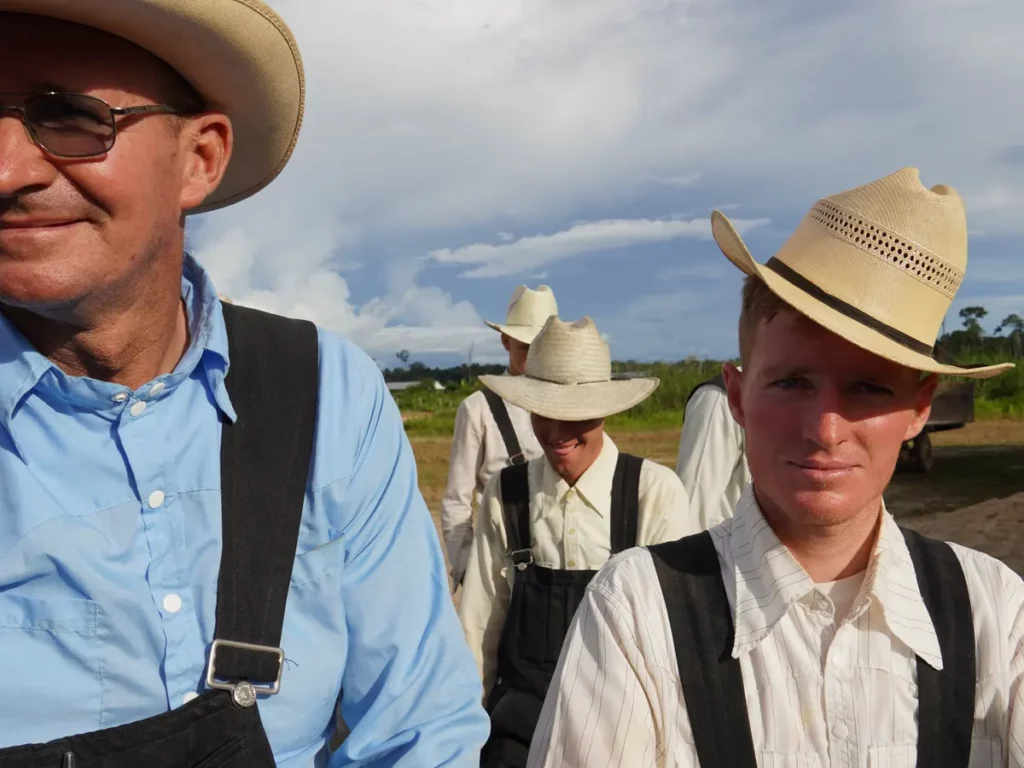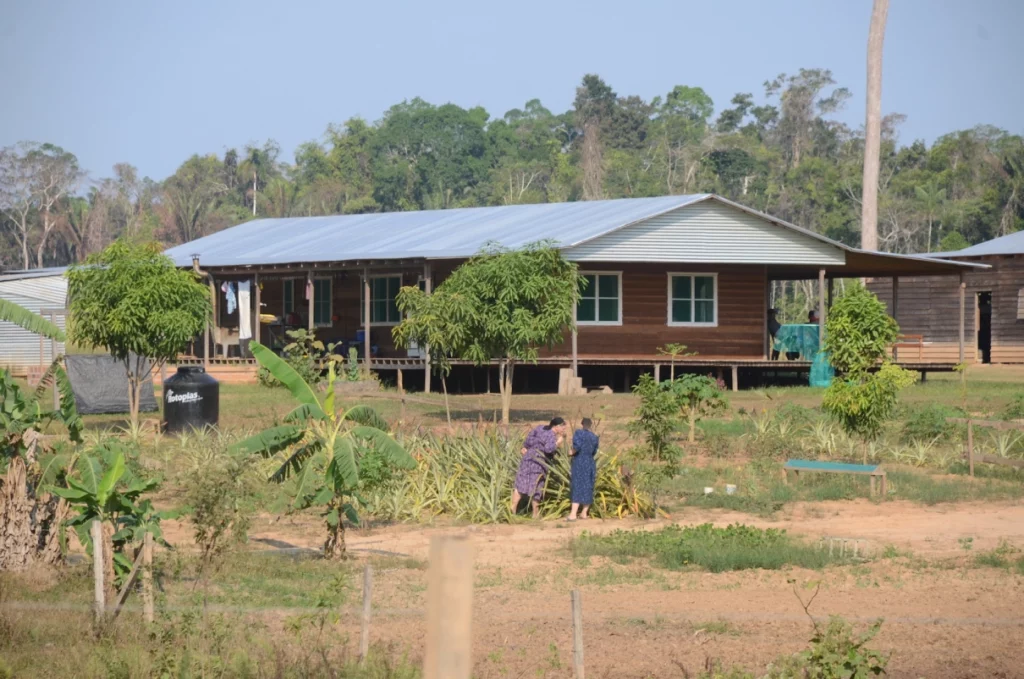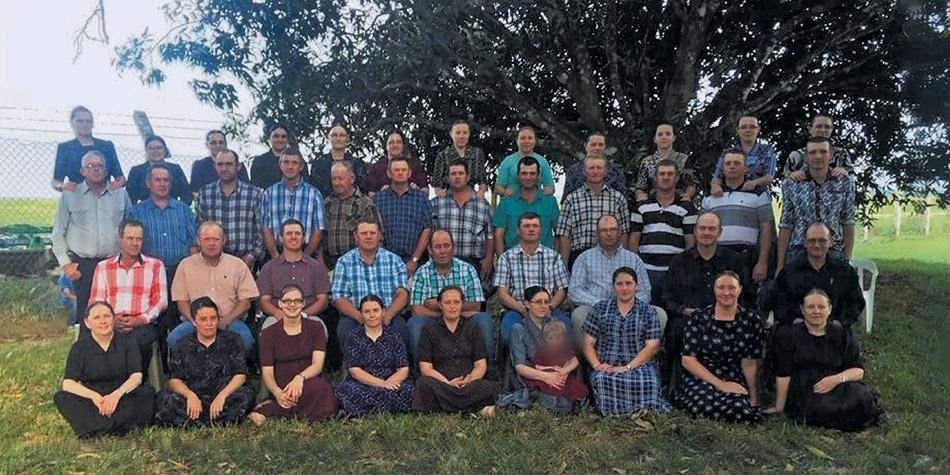The estimates by the Monitoring the Andean Amazon Project (MAAP) suggest deforestation near Mennonite camps has reached 659 hectares (1,628 acres) so far this year, compared to 98,400 hectares all around Peru’s Amazon.
While small-scale agriculture and illegal gold mining remain responsible for over 99% of deforestation in Peru’s Amazon so far this year, MAAP Director Matt Finer told Reuters this deforestation near Mennonite camps deserved scrutiny.
“Most of the deforestation in the Peruvian Amazon is small scale,” Finer said. “But in terms of having one major entity that is responsible for (this much) deforestation, that is quite rare.”
Since 2017, MAAP estimates deforestation linked to Mennonites has reached 4,800 hectares (11,861 acres), four-fifths the size of Manhattan in New York.
Mennonites are a reclusive Christian group who have expanded around the world. They say they live peaceful lives and that expanding their farming is the will of God and a way to provide their families with a simple life.
They could not be reached for comment on the deforestation report.
Peru has the world’s second largest section of the Amazon, the world’s largest rainforest whose preservation is considered critical to mitigate climate change. Most of Peru’s rainforest is sparsely populated and inaccessible, which has helped preserve it.

Deforestation in Peru’s Amazon has remained relatively stable in recent years, with a significant spike in 2020 during the first year of the pandemic.
“An entity that can continue expanding … I think that’s what makes this troubling, and not only the current deforestation,” Finer said, “but the potential escalation of continued deforestation.”
The Mennonite settlements have drawn attention from Peruvian authorities over whether they have engaged in illegal deforestation, according to Mongabay, an environmental news organization.
Mennonites have also drawn attention in Mexico over deforestation, detailed in a recent Reuters report.
The Colombian side of this Mennonite deforestation
The attack of the Mennonites on the indigenous people of the Colombian Amazon
It’s already been seven years since this gringa sect has been present in the area without stopping deforestation, destroying with their chainsaws and cornering the natives more and more every day, says the report published on Las2Orillas.
The Latin American indigenous peoples are not alien to the presence of the Mennonite colonies. Although they are of European origin, this religious community has occupied large areas in countries such as Mexico, Argentina, Paraguay, Peru and Bolivia. In 2015, three colonies arrived in Colombia, where they quickly caused a stir due to the deforestation caused in ancestral indigenous territories of the department of Meta and due to the accumulation of lands with a shady past.
As a result of the denunciations of the Sikuani indigenous communities, who have organized themselves to reclaim the lands occupied by the ‘gringos’ —as they themselves call them— on the grounds of Puerto Gaitán, in Meta, the environmental authority Cormacarena has registered three processes sanctions in relation to the environmental effects caused by the felling of gallery forests and the contamination of water springs.
According to Cormacarena, during 2022 there have been no new massive logging activities, but on the contrary, actions have been carried out to recover the affected area, as agreed in the legal commitments acquired between the entity and the Mennonites. They even indicate that, after investigations by the environmental entity and follow-up by the indigenous communities, on October 4, 2021, Cormacarena flew over the Mennonite hectares with drones to verify from the air if “logging activities had been suspended and burning of trees in the area, in addition to the collection of information on the illegal construction of road infrastructure, the occupation of riverbeds and the effects that these actions generated in the ecosystem”, reads the report that the entity delivered to Rutas del Conflicto y Mongabay Latam in response to a right of petition.

For three days Cormacarena and the Prosecutor’s Office carried out the visits and determined that there were no illegal actions and that everything had the necessary permits, at least so far this year. However, on territorial issues, the situation remains worrying. Since March of this year, organizations such as the Claretian Corporation and the National Indigenous Organization of Colombia (ONIC) have reduced their presence in the territories due to the situation of violence. In January of this year, the environmental and land leader, Luz Marina Arteaga, was murdered in the neighboring municipality, Puerto Lopéz. Some lawyers who advised indigenous people continue to do so without the support of the organizations. While the Mennonites continue to acquire properties. It is estimated that at the moment they are around 38,000 hectares, according to the certificates of tradition and freedom of land that were in the process of being purchased when Rutas del Conflicto and Mongabay Latam carried out the first investigation into the past of the lands occupied by this religious community.
In the analysis that this journalistic alliance was able to carry out through the Global Forest Watch satellite monitoring platform, it found that there is new evidence of land use change in the spaces occupied by the Mennonites and that are part of the territory claimed by the communities. Between January and the first week of October this year, 505 deforestation alerts were detected.
If we take into account that between August and December 2021 —when the deforestation problems were reported to Cormacarena— 459 alerts were generated in the same area, the tool indicates that the deforestation problem would continue in the area. In tracking the alerts, we can see that the last ones were generated between April and June of this year.
The governors of the Barrulia, Tsabilonia and Iwitsulibu ancestral territories have constantly denounced threats and intimidation by members of the colonies and armed actors who are pressuring them to evict them from the properties and prevent them from claiming their land. Some of the governors spoke with fear to Mongabay Latam and Rutas del Conflicto, pointing out that there is a dangerous security situation even for themselves.
Several testimonies collected during the investigation told Rutas del Conflicto and Mongabay Latam that the Mennonites continue to cut down the gallery forests. “They have bought new land and cut wood where our ancestors were,” narrates a source who prefers to omit his name due to the territorial tensions between the indigenous communities and the Mennonite colonies.
Double reality: sanctioning processes and reforestation commitments
The three sanctioning processes related to the Cormacarena files for the Mennonite colonies due to their activities of deforestation and planting of soybean and corn crops in a protected environmental zone (gallery forests and water springs), created a series of legal compensation commitments environmental.
So far, the entity has referenced the planting of 200 individuals of moriche palms in one of the areas mentioned in the processes. Likewise, members of the Mennonite community were linked to reforestation projects as part of the Meta Verde restoration campaign in alliance with the departmental government that intends to restore the protected strips.
The Secretary of the Environment of Puerto Gaitán affirms that during this year they have not received new complaints nor have they identified new burnings. At the end of July, officials from the secretariat visited the Mennonite properties and reported that no new effects had been observed.
“Between January and February, yellow machines were immobilized from third parties who were extracting reef material to sell it to the Mennonites, who are building roads… This was done by the police because they did not have the relevant permits,” the mayor’s office official reported. Ninfa Novoa, who also alleged that she was completely unaware of the fulfillment of the commitments with Cormacarena.
Rutas del Conflicto and Mongabay Latam tried to speak with the lawyer for the Mennonite colonies, Jeny Azucena Díaz, in order to find out about the reforestation and compensation actions. However, despite having a first conversation in which it was stated that “they have complied and are waiting to meet with the Victims Unit to be oriented”, the interview never took place. The lawyer again reiterated that they do not have crops or have deforested, they only comply with the commitments to avoid having problems, but that “all these are inventions of the indigenous people… they are the ones who have deforested.”
These affirmations occur even in the face of the sanctioning processes indicated by Cormacarena, the journalistic investigations, the satellite images and the constant denunciations against the Mennonites, not only in Colombia but in Latin America. Governors Alexander Álvarez and Alba Rubiela say with certainty that both the Mayor’s Secretary of the Environment and the lawyer Jeny Azucena are fully aware of the repeated felling of trees and the contamination of the water.
While the Mennonites continue to expand their colonies, their crops and their presence in the Altillanura, the indigenous communities await a response from the State.
